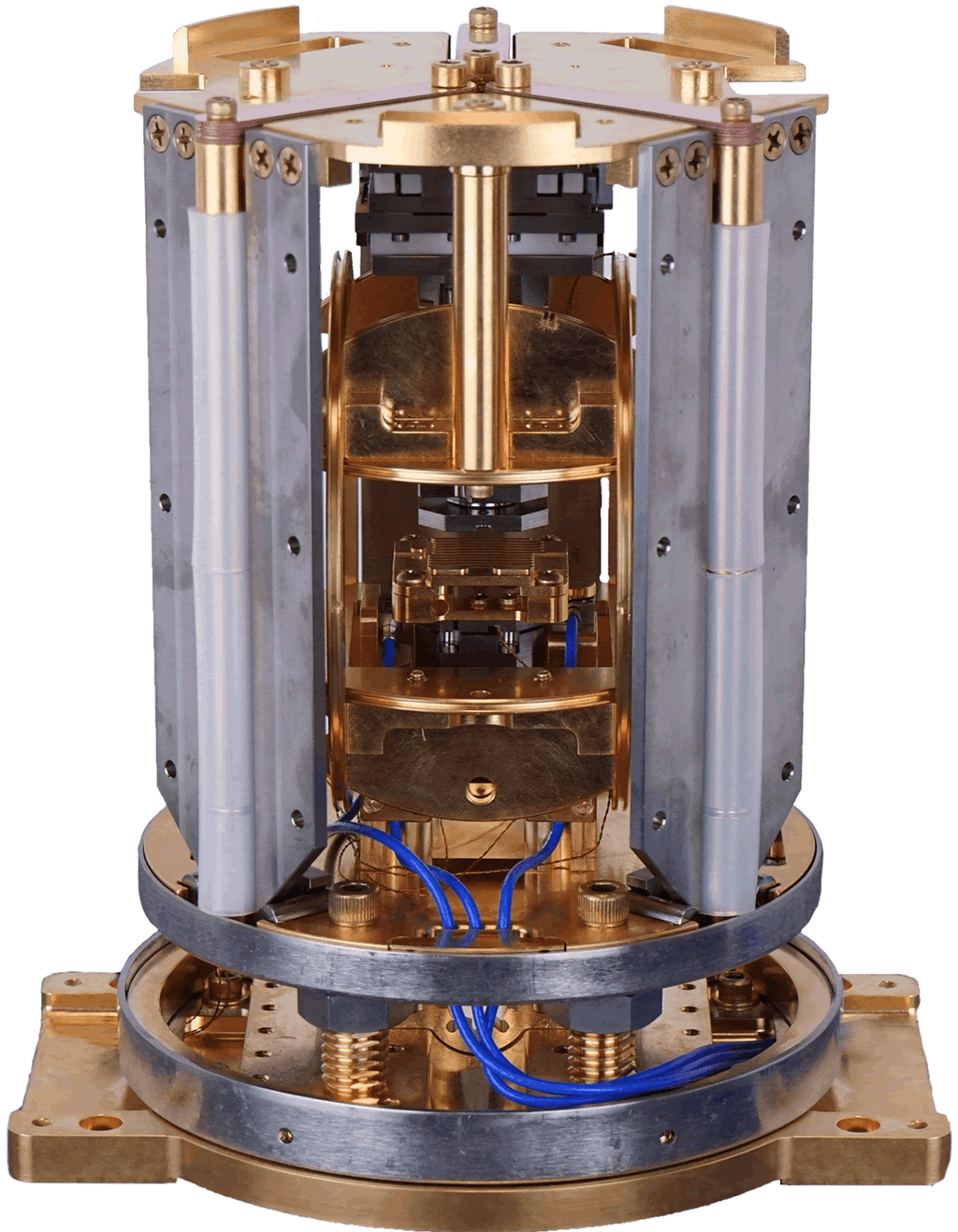Discount Products: Look through products available for a 25% – 50% discount in 2020. The items provided on a first come, first serve basis. View Discounted Products
FormFactor HPD IQ1000 Fully Automated Scanning SQUID Microscope
- Rapid image acquisition
- High resolution imaging
- SQUID sensor autotuning
- Unattended operation
- Sample size
- Closed-loop scanner stage
- Magnetic shielding
- Magnetic field control
- Flexible sensor integration
- Cryogen-free
Introducing the FormFactor HPD IQ1000 Fully Automated Scanning SQUID Microscope
The IQ1000 is a new scanning SQUID¹ microscope used to study the dynamics of trapped magnetic flux (magnetic vortices) in superconducting circuits which can negatively impact circuit operation. This microscope enables superconducting device design teams to image magnetic vortices in devices cooled through the superconducting transition temperature in controlled magnetic fields. With rapid scan speed and process automation, the IQ1000 is the first commercial product of its kind to enable unattended and high-throughput characterization. Device designers can now eliminate the guesswork involved in the design of resilient superconducting circuits, and significantly reduce development time by locating and capturing detrimental magnetic vortices to enhance device performance.
The IQ1000 accomplishes this characterization by scanning a SQUID magnetic flux sensor over the sample surface with sub-micron resolution to generate images of magnetic flux and material magnetic susceptibility. The microscope also enables the study of vortex dynamics in the circuit using XYZ-vectored magnetic fields, precise sample temperature control, and direct manipulation of vortices using the sensor field coils. These characterization techniques allow circuit designers to see where vortices are trapped in patterned superconducting thin films and understand the effect of specific circuit layouts and material properties on vortex trapping. Using the IQ1000, device designers can better understand vortex trapping and optimize circuit design, material selection, and placement of ‘moats’ to capture the vortices in classical and quantum superconducting logic circuits.


Key Features
- SQUID sensor autotuning: The system autotunes and locks the SQUID magnetic flux sensor system and automatically maintains optimal system tuning.
- Unattended operation: All scan procedures can be pre-programmed and run unattended. Several hours of experiments can be run without supervision.
- Sample size: The system can accommodate samples up to 20×20 mm or numerous smaller samples at a time (e.g. nine 5×5 mm samples).
- Closed-loop scanner stage: Images are free of distortion and repeatable with sub-100 nm precision. The scanner stage also enables repeatable sub-space scanning and position hold for spectroscopy and vortex manipulation.
- Sample temperature control from <3 K to over 20 K with precise, programmable control of heating and cooling rates.
- Magnetic shielding: Microscope core has two-layer magnetic shielding and complete non-magnetic construction for <20 nT residual field in sample scanning region.
- Magnetic field control: XYZ Helmholtz coils inside the magnetic shielding can control field 0-70 uT with less than 3% non-uniformity across sample region.
- Flexible sensor integration: SQUID sensors available through Formfactor or the customer can provide their own sensor(s).
- Cryogen-free: The system is cryogen-free, and the microscope core is vibration-isolated from the cryocooler.
Key Benefits
Overall, better understanding of vortex trapping and dynamics will aid the development of operationally robust superconducting circuits and will help accelerate the growth of the superconducting quantum computing market.
¹ SQUID stands for “superconducting quantum interference device”. A SQUID combines a superconducting loop with two Josephson junctions to form a sensor which converts magnetic flux to a signal current. The current passing through a SQUID (or output from a SQUID) is directly related to the magnetic flux passing through the SQUID loop.

Trust the Experts at ACA TMetrix Inc.
ACA TMetrix Inc. is a leading Canadian distributor of test and measurement instruments and design tools. For over 55 years we have provided products manufactured by the world’s leading instrument manufacturers. Leading Distributor of Design Tools and Test Equipment in Canada.
Specifications
- Maximum total sample area of 20×20 mm
- 100×100 um scan area
- Resolution of 200-500 nanometers (depending upon SQUID sensor used)
- Scan speed from 0.1 to 100 um/sec
- Scan accuracy and repeatability better than 0.2 um
- Microscope base temperature <3 K
- Sample temperature control from <3 K to over 20 K
- Quiescent magnetic field <20 nT
Datasheet







